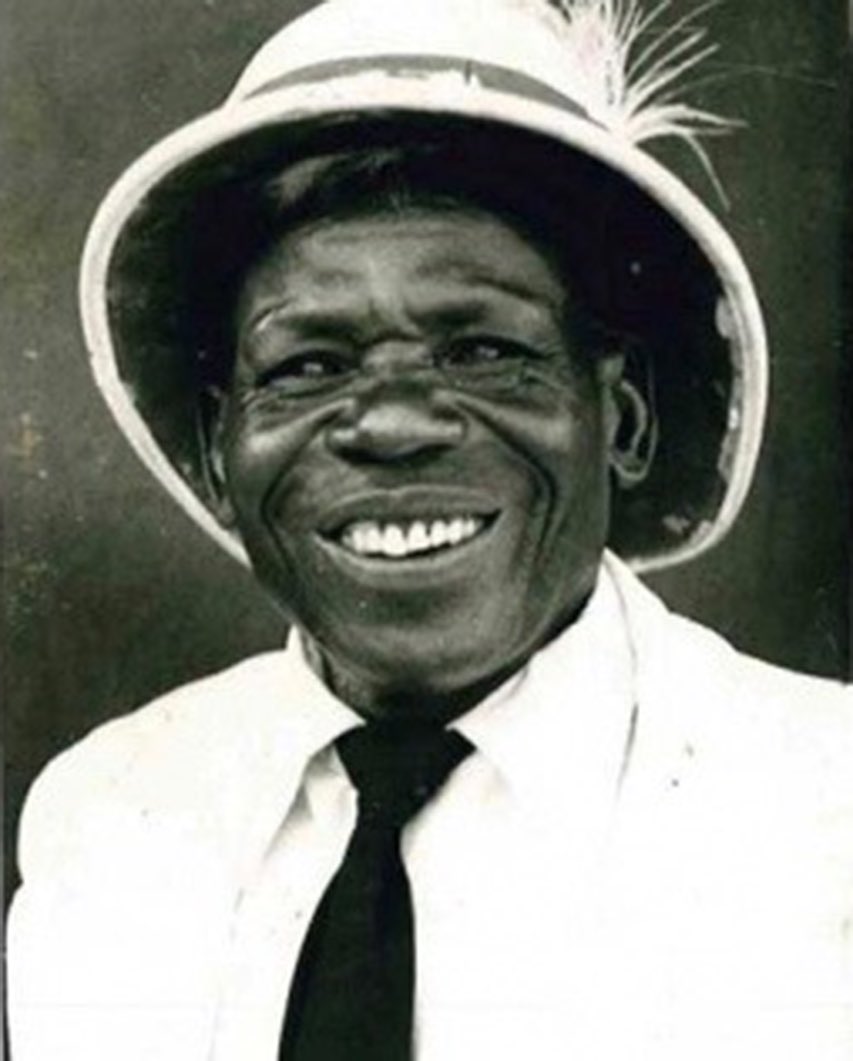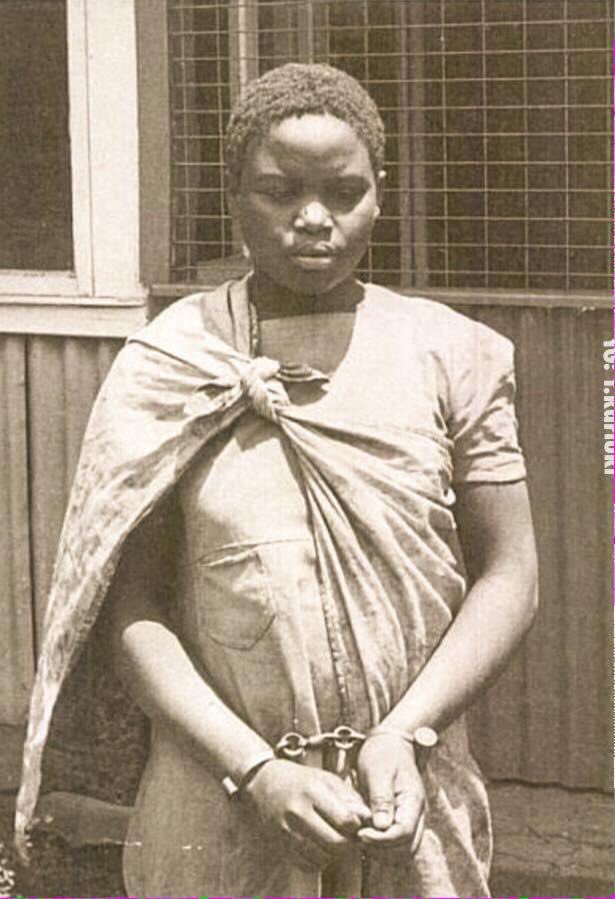#HistoryKeThread 🧵: Two Forts
———
In 1890, officials of the Imperial British East Africa Company (IBEAC) - which midwifed the colony that later became known as Kenya to the British government - led by Fredrick Lugard established a military frontier post at Kîawariûa.
———
In 1890, officials of the Imperial British East Africa Company (IBEAC) - which midwifed the colony that later became known as Kenya to the British government - led by Fredrick Lugard established a military frontier post at Kîawariûa.

Today, this is the area we generally call Dagoretti.
Over a period of a few weeks, Lugard supervised the construction of a new fort here. He later left for Buganda, leaving George Wilson in command of the new garrison.
Over a period of a few weeks, Lugard supervised the construction of a new fort here. He later left for Buganda, leaving George Wilson in command of the new garrison.
It wasn’t long before the fort was besieged by a phalanx of Agîkûyû fighters. They were under the command of Waiyaki wa Hinga (pictured).
The siege lasted for a week and a half. The aim was to scare off Wilson and his force of a few Europeans, Nubian, Swahili & Somali fighters.
The siege lasted for a week and a half. The aim was to scare off Wilson and his force of a few Europeans, Nubian, Swahili & Somali fighters.

One evening under cover of darkness, Wilson and the entire force escaped from the fort. They made their way to Masaku (Machakos), the Company headquarters at the time.
Realizing that the fort had been abandoned, young warriors ransacked and burnt it down.
Realizing that the fort had been abandoned, young warriors ransacked and burnt it down.
This was among the earliest recorded confrontations between the Agikuyu and European invaders.
After a few weeks, Wilson returned to Kiawariua to attempt to recapture the garrison. He was this time backed by additional soldiers and more powerful weapons. He wasn’t too surprised to find the fort - which they quickly reconstructed - razed to the ground.
But no sooner had they completed rebuilding it than Waiyaki wa Hinga and his bigger force of fighters attacked it a second time.
In spite of the fact that he had backed himself up with additional men and powerful weapons, Wilson had clearly underestimated the numbers and ferocity of Waiyaki’s men. He abandoned the fort again and returned to Masaku for safety.
Following the two successive defeats, officials at Masaku replaced Wilson with Major Eric Smith.
Major Smith was not too inclined to rebuild the damaged fort at Kiawariua. Instead, he secured another spot some distance away from Dagoretti, at a place called Kanyonyo (Kikuyu area), and built a fort there.
He named it Fort Smith (pictured in background).
He named it Fort Smith (pictured in background).

Some of our readers may recall a thread we did in which Sir Gerald Portal, the British General Consul for East Africa, once described in 1893 the situation at Fort Smith.
“The Kikuyu tribes were practically holding the Company’s station (Fort Smith) in a state of siege”, he wrote.
Whenever company staff ventured outside, he said, one European marched in front, one in the rear, and one in the middle of the long line.
Whenever company staff ventured outside, he said, one European marched in front, one in the rear, and one in the middle of the long line.
“Even then, not a sound is heard; a scarcely perceptible ‘twang’ of a small bow, the almost inaudible ‘whizz’ of a little poisoned arrow for a dozen yards through the air, a slight puncture in the arm, throat, or chest, followed, almost inevitably, by the death of a man”.
Meanwhile, the Agîkûyû were wary of the recent development of a new fort. Author and historian Kinuthia wa Mugia of the Gikuyu Cultural Centre described in 1979 details of a meeting of Agikuyu elders convened to discuss the matter in 1891.
The meeting was convened by Waiyaki. Quoting Kinuthia’s sources, author Maina wa Kinyatti referred to the meeting as that of the Agikuyu War Council, and translated Waiyaki’s address as follows:
“We have gathered here because all of you know that the white invaders who occupied our country have brought us a lot of misery. Besides occupying our country, they have also brought all kinds of diseases.”
“As you know when these people came, they built a fort at Kiawariua with my permission, then after several months, they started expanding their fort on our land, stealing our livestock, and raping our women. I said enough was enough; we chased them out of Kiawariua…
…Now they have built another fort at Kanyonyo without our permission.”
“For the past two weeks, the heroes of the country have fought them and now they have encircled their fort. None of them is coming out of the fort; they are holed in there like trapped rats….. (cont’d)
…since the white commander wants to negotiate with me so that we allow them to leave Kanyonyo before they die from starvation, I am asking you - you the power of the country, to allow me to go to meet (the British commander). Our position is clear, they should leave… (cont’d)
….our country if they want peace; otherwise, we will eliminate them and give their bodies to wild animals.”
“We are the lregi heroes. People cannot come to our country to oppress us, to rape our women, to bum our homes to steal our livestock and to kill us. Is this their country or ours? It is better to die all of us than to be slaves in our country.”
According to Kinuthia wa Mugia, Waiyaki concluded his speech by reminding the people of the prophecy of the Gikuyu seer, Mûgo wa Kibiru, who had foretold about strangers who would come to Gikuyu country, armed with superior weapons.
The War Council gave Njamba Waiyaki permission to meet with Major Smith.
It is not clear if Waiyaki had earlier sought for an appointment with Major Smith.
This is because when Waiyaki - unarmed and unaccompanied - arrived at the fort, Major Smith was away.
It is not clear if Waiyaki had earlier sought for an appointment with Major Smith.
This is because when Waiyaki - unarmed and unaccompanied - arrived at the fort, Major Smith was away.
And so the Gîkûyû leader was instead met by deputy garrison commander William Purkiss.
In the course of the talks, Purkiss tried to persuade Waiyaki to call off the siege. The British government, he said, had no intention to occupy Gikuyu country, and was only interested in trade.
According to Kinuthia wa Mugia, Waiyaki angrily shot back, accusing the British and their soldiers of raping Agikuyu women, stealing livestock and killing locals.
It was that at that juncture that Waiyaki stormed out of the meeting, but not before demanding that the occupiers vacate the place by sunset the next day.
As Waiyaki prepared to leave, Purkiss ordered his detention. The Gikuyu leader tried to resist arrest but was overpowered and handcuffed. To restrain Waiyaki further, Purkiss had him chained.
Purkiss then sent for Kinyanjui wa Gathirimu (pictured), another prominent Gikuyu leader. Following their meeting, Purkiss ordered that Waiyaki be taken to Mombasa to stand trial. 

Historians believe the British employed divide-and-rule tactics to have Kînyanjui, a collaborator, on their side.
On 17th August 1892, two days after his arrest, a chained Waiyaki left Fort Smith for Mombasa, escorted by armed guards. When the caravan reached Kibwezi multiple sources say that he protested his incarceration and turned violent.
He was promptly killed and buried in an unmarked grave at Kibwezi. Some Agikuyu believe he was buried alive.
The circumstances under which Waiyaki was arrested at Fort Smith, and even details about his death, have not been without controversy.
The circumstances under which Waiyaki was arrested at Fort Smith, and even details about his death, have not been without controversy.
Pioneer colonial administrator John Ainsworth (pictured) published his own version of the arrest and subsequent death of Waiyaki.
Excerpts:
Excerpts:
“A few months later Waiyaki put the final touch on things. It was the custom for the Askari guard at the entrance to the Fort to allow any of the important elders who wished to see the Officer-in-charge to enter but they were required to leave any arms with the guard….
….Waiyaki was in the habit of entering the station frequently. One day he paid one of his usual visits. He left what arms he appeared to carry with the guard and went on to the house occupied by Purkiss, who at that moment was washing his face in a wash hand basin.
“Purkiss had his back to the door which was open.
Waiyaki, seeing this, drew out a simi, rushed into the room and made an overhead slash at Purkiss. Fortunately the ceiling of the room, consisting of wooden rafters, was very low and the sword caught in one of the rafters…
Waiyaki, seeing this, drew out a simi, rushed into the room and made an overhead slash at Purkiss. Fortunately the ceiling of the room, consisting of wooden rafters, was very low and the sword caught in one of the rafters…
….before it could descend. Purkiss immediately swung round, rushed at his enemy and knocked him back against the wall where he lay until the guard dashed in........Waiyaki was probably manhandled and wounded in the head .......
…..he was sent to the Coast as a prisoner but died at Kibwezi. .......Purkiss by this time was suffering from ill-health and on being relieved by Frank Hall, who had recently been appointed by the Company, he left for the coast with the idea of going for a sea voyage.”
“Unfortunately, he too became very ill on arrival at Kibwezi and died.”
That was Ainsworth’s version of events.
That was Ainsworth’s version of events.
In 1892, the dark reddish soils of Kibwezi admitted the tortured remains of a fallen Waiyaki.
Two years later, when an indisposed Purkiss happened by, the same soils suddenly leapt out of their depths and mercilessly snapped him up, taking him down with them.
Poetic justice?
Two years later, when an indisposed Purkiss happened by, the same soils suddenly leapt out of their depths and mercilessly snapped him up, taking him down with them.
Poetic justice?
——
For 7 years we have delivered hundreds of anecdotes and stories like these from Kenya’s past to you.
If you enjoy the posts and wish to receive more of them, kindly support our work.
MPESA Paybill: 222 111
Account No. 1947 944
Have a blessed week ahead.
——-
For 7 years we have delivered hundreds of anecdotes and stories like these from Kenya’s past to you.
If you enjoy the posts and wish to receive more of them, kindly support our work.
MPESA Paybill: 222 111
Account No. 1947 944
Have a blessed week ahead.
——-
• • •
Missing some Tweet in this thread? You can try to
force a refresh

 Read on Twitter
Read on Twitter












